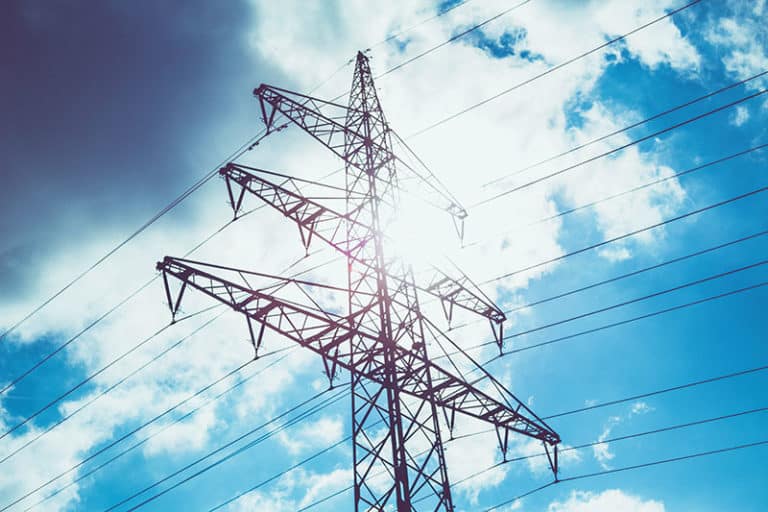by Robert Berry, President and CEO of Big Rivers Electric Corporation and Tony Campbell, President and CEO of East Kentucky Power Cooperative
In recent months, electric utility customers across the U.S. have received a shock as they opened their monthly electric power bills. The high costs they are experiencing are largely the result of years of unsound government energy policies, which have cut options to fuel reliable energy. U.S. electricity producers have been forced to depend more on natural gas and must compete against foreign nations for our domestic natural gas supplies. Those nations are willing to pay 1,000 percent more than U.S. consumers are accustomed to paying. Some, notably Russia, have taken advantage of the situation to weaponize energy to advance their radical interests.
U.S. policy-makers have enthusiastically incentivized solar and wind generators, regardless of how well the operating characteristics of those technologies match up with U.S. energy needs. But when those solar and wind resources do not perform—an occurrence as predictable as the sun setting and the seasons changing—energy producers must turn to reliable 24/7/365 thermal energy resources. For large-scale energy production, that means natural gas, coal and nuclear. But, facing ever-stricter regulations and price competition from heavily subsidized renewable resources, coal and nuclear plants increasingly are being driven into retirement.
In 2020, the U.S. added 27.6 gigawatts (GW) of solar and wind resources, along with 6.6 GW of natural gas; virtually no coal or nuclear resources were added. In fact, over the past decade, 95 GW of coal capacity has been shut down, along with 12 nuclear reactors. Today, no new coal plants are being built in the U.S., and only two nuclear reactors are under construction. As a consequence, when solar and wind do not show up, electricity providers increasingly must turn to one key flexible resource —natural gas. Today, 40% of U.S. electricity generation is fueled by natural gas, up from 17% in 2001.
Promoters of solar and wind undoubtedly will maintain that utility-scale battery technology is the silver bullet to solve renewables’ intermittency problem. But today, less than 1% of U.S. solar and wind capacity is backed up by batteries. The technology for large-scale storage remains largely in the developmental stage. Rapid deployment of large, utility-scale batteries to back up hundreds of gigawatts of solar and wind resources will require aggressive, expensive growth of battery-manufacturing capacity. Today, much of the mineral content necessary to produce lithium-ion batteries—the foremost technology being pursued for both utility energy storage and electric vehicles—comes from nations like China and Russia, whose interests do not align well with the U.S.
As the U.S. is learning at this very moment, we must account for differences in foreign interests when it comes to energy. In recent years, Russia has supplied one-third of Europe’s natural gas for heating and manufacturing. In response to Russia’s recent invasion of Ukraine, those nations imposed sanctions, so Russia cut the flow of natural gas. As a result, gas prices are spiking around the globe. Large-scale U.S. purchasers of natural gas, including East Kentucky Power Cooperative and Big Rivers Electric, have been accustomed to paying $2 to $3 per million BTU for natural gas; meanwhile, power generation counterparts in Europe and Asia are paying $20 to $30. In fact, in recent months, spot prices in those regions have shot up as high as $50 to $60 per million BTU. Recently Big Rivers decided to convert one of its coal-fired generating plants to natural gas due to those low gas prices only to see the same gas prices spike over $9 to $10 per million BTU.
For U.S. electric customers, this means high electric bills. President Biden recently pledged to expand U.S. natural gas exports to assist our European friends. (It is worth noting that U.S overseas natural gas exports are a new development. In 2016, the U.S. exported very little liquefied natural gas overseas. By the end of this year, the U.S. will have more export capacity than any other nation on the globe, nearly 14 billion cubic feet of gas per day. Plus, each day, the U.S. exports to Mexico another 7 billion cubic feet via pipelines.) As a result, Americans find themselves in the awkward position of bidding against foreign nations for our own domestic supplies of natural gas.
Meanwhile, the pressures that have constrained and reduced coal and nuclear production are catching up with the natural gas industry. Gas drillers who cut production during COVID’s economic doldrums have been slow to restart production, even though factories and stores roared back to life in 2021. Media reports suggest gas producers are reluctant to commit big dollars to drilling because of punitive regulatory risks. And even if they are willing, drillers face difficulties arranging financing due to pressure on banks to cut lending for fossil fuel production.
At a 2019 town hall in New Hampshire, President Biden famously stated he would jail the heads of fossil fuel companies. It was, perhaps, just election-season hyperbole, but his administration certainly wasted no time in targeting the industry. The Environmental Protection Agency is deploying an intensive barrage of regulations aimed at fossil fuels; this will hasten the closure of even more coal plants and further hinder the development of new natural gas capacity. These actions create tremendous uncertainty for financial partners, which are vital to the capital-intensive energy industry. As a result, financial institutions are abandoning fossil fuels or raising financing costs to prohibitive levels.
As with natural gas, U.S. coal producers suddenly have a lucrative opportunity to export coal to nations willing to pay much higher prices than the U.S. coal market has seen in recent years, creating steep upward cost pressure domestically, as well as a scarcity of available coal as mining companies face numerous challenges to restarting operations, including labor and equipment shortages, constrained rail transportation, high financing costs and regulatory resistance.
Recently, U.S. Energy Secretary Jennifer Granholm visited EKPC’s solar farm near Lexington, Ky. During her visit, EKPC CEO Campbell informed Secretary Granholm that renewables play an important and growing role in energy production, especially to cut carbon emissions and address climate change. But he also informed her, if the U.S. goes too far too fast with the transition, it will seriously jeopardize the cost and reliability of America’s energy supply, which is critically important to the welfare of the American people and the American economy.
EKPC and Big Rivers are committed to doing everything we possibly can, by utilizing every tool available to us in protecting the reliability and cost-effectiveness of the energy we supply for 1.35 million Kentucky residents and businesses while moving toward a more sustainable future as technology allows. EKPC and Big Rivers believe in the “all-of-the-above” approach to maintain a more balanced resource portfolio by utilizing solar, hydro, coal, and natural gas in order to protect the environment and sustain reliable energy for our Member-Owners. We call on our nation’s leaders to make the same commitment and also to ensure the U.S. does not expose the cost and reliability of our abundant domestic energy supplies to the whims of radical interests, foreign nations and our enemies who have unscrupulously weaponized the world’s energy supply.





